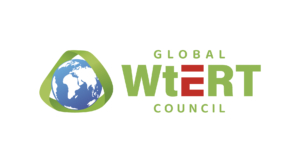M.S. Thesis: Capital Cost Comparison of Waste-to-Energy (WTE), Facilities in China and the U.S.
By Jane Siyuan Wu
Advisors: Dr. A.C. (Thanos) Bourtsalas and Prof. Nickolas J. Themelis
Department of Earth and Environmental Engineering
Fu Foundation School of Engineering & Applied Science
Columbia University
January 2018
Waste-to-Energy (WtE) is a technology that has seen a major rise in the last decade as China has been looking for methods for handling its population boom and related rapid increase in waste generation rates. Chinese companies have been able to construct WtE facilities at about one third of the capital cost as facilities in the U.S. and Europe. This thesis seeks to compare regulatory, technological, and financial factors that affect capital costs of WtE development around the world, focusing on China and the U.S.
The findings of this research show that the capital cost difference between Chinese and U.S. WtE facilities are largely due to China’s unique level of governmental support, faster municipal approval than in other countries, cost savings on labor, and rapid development of in-country component manufacturing and construction capabilities. China has been able to construct WtE facilities at the average rate of $250 per annual ton capacity while U.S. facilities are constructed at a much higher cost rate at an average of $840 per annual ton capacity.
In addition, within each country, increased restrictions on emissions have led to noticeable increases in the capital cost of WtE facilities. In the U.S., this essentially stopped the pursuit of new WtE construction after 1995 with the exception of one new facility in 2015, while in China, companies have adapted to new regulations and shown reduced costs over time after a regulation-induced cost increase.
Chinese companies have shown interest in pursuing WtE projects outside of China, with two projects in Vietnam and Ethiopia including involvement from Chinese companies. These facilities are being built at roughly a 40% greater cost (i.e. $350 per annual ton capacity) than that of a Chinese company building a WtE facility within China. A greater escalation factor can be expected if Chinese companies pursue WtE projects in the U.S. or Europe due to increased labor costs, greater regulatory hurdles, and increased distance from component manufacturing locations. However, it is expected that there should be a cost benefit from the Chinese model of standardized designs (i.e. reproducing previous facility designs) and economies of scale.
